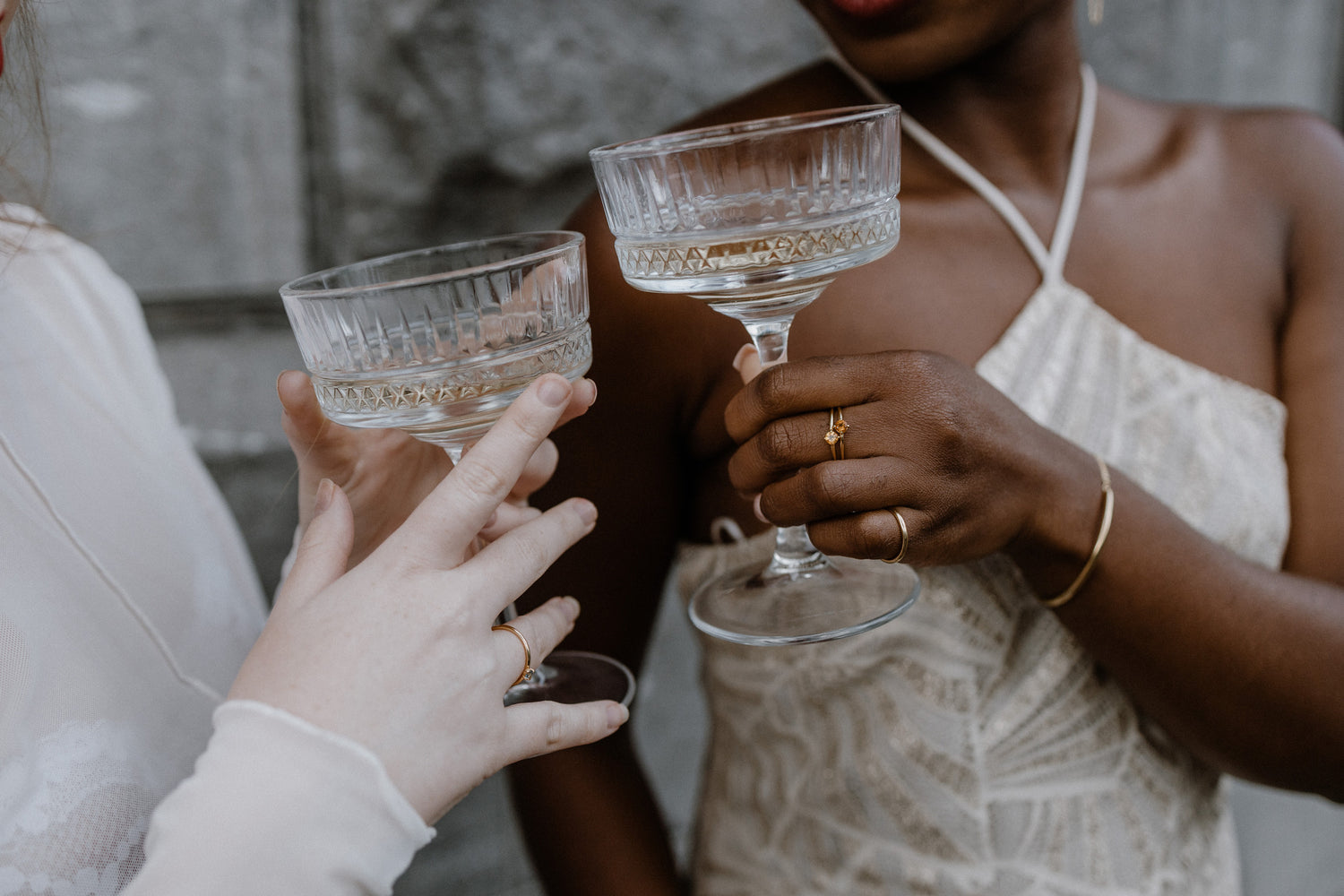You are aware that you want to do something good or at least better. You want to consume differently, but a curated closet might be a step too far. You hear a lot about sustainable clothing but secretly you have no idea what it is. Eco, fair trade, ethical, recycled or sustainable; is it all the same? Or what is the difference?
Collective name of sustainability
Sustainability is actually the basic collective name. The official definition of sustainability according to Van Dale is:
expensive (adjective, adverb, magnifying staircase: more durable, superlative: durable) 1 long lasting2washed to wear or spoilage3the environment has little impact: renewable sources of energy wind, sun, water power, etc.; sustainable manufacturing.
Sustainability is a broad concept, but in short it means that in a sustainable world people, planet and profit are in balance with each other, so that we will not exhaust the earth. The World Commission for Environment and Development defines sustainability as “development that meets the needs of the present without compromising the ability of future generations to meet their own needs”. In other words, to use the earth in such a way that future generations can also enjoy it. The pursuit of achieving an ecological balance.
How can sustainability be integrated into fashion?
This means that the products must be produced without causing damage to the environment and to people. It is about the social consequences that a product can have during the entire cycle of producing.
Before clothing actually hangs in the stores, it has already been through a huge journey. The average process looks like this:
o In most cases the raw material grows on the land and is picked,
o washed and combed,
o processed into wires,
o made into a fabric,
o then cut,
o put together by using various sewing machines
o forwarded to the store.
This is purely the material. To make this material into a garment, people are needed to manufacture the material and make it into a garment. There are also people who are involved in the process but do not actually see the garment (think of designers, buyers, sellers and logistics people).
Making a garment has quite many different facets and there are also different ways to look at sustainability in clothing. It can be divided into ecological, social or economic.
Okay, what is the difference between these three?
Eco, environmentally friendly or organic, speaks for itself – only looks at the environmental part. For example, are pesticides used and the amount of water and energy consumed.
Social looks at everything that people are involved in, think of the people who pick cotton or the makers of a product in a factory or atelier. Social initiatives such as Fair Trade and Fair Wear focus on how people work. How many hours is worked? How are the working conditions? Are toxic substances released in the process and do the people who work with them get protective equipment?
Economically, are the people paid enough according to the standard of the country where they live. Sounds logically right? Unfortunately, the opposite is true, in most clothing factories, the whole family has to work long days (every day) to just have a roof over their head and be able to eat.
If we round the circle, this means that organic cotton is not by definition ethically or economically justified. Although the chance is greater, if a producer chooses organic cotton, he will be aware of the social & economic indicators.
The garment industry is extremely polluted (for example, more than 150 people are needed to produce 1 garment). From the beginning to the end, the process is so complicated that it seems impossible to control the entire chain process.
Fortunately, the fashion industry is changing. More and more producers / brands are working on sustainable initiatives. But how can you know whether it is environmentally friendly, ethically and economically justified? There are various quality marks that deal with different subjects. That is why sustainable products often have certificates.
I can imagine that you not always want to check the certificates so here are simple five checks to know if you are buying a sustainable garment!
Imagine .. Tuesday at the end of the afternoon, just had your last appointment and you’re just walking around in the city looking for an outfit need for … (fill in a special occasion yourself). Strolling into a boutique and there it is THE dress that you must have. You see yourself shining in this dress stroll with your fantastic sneakers you recently bought. You fit the dress and it’s perfect! Secretly you hear the voice in your head that reminds you of the documentary The True Cost but you whisper to yourself ‘not here not now’. Sure you hope that the dress is made ethically responsible, but you do not know for sure. You buy the dress and you promise yourself true next time to really will do more research.
No worries, you are not the only one who does this. The fact that you are now reading this blog testifies that you will really act differently next time and we are (and hopefully too) very happy!
Okay, here we go! These 5 checks help you choose your sustainable garment the next time.
# 1: Am I going to wear this more than 50 times?
Did you know that an item of clothing is only worn 7 times on average before it is disposed of? The first step is therefore wear your dress (or whatever clothing item) more than 50 times. Make it up, enjoy it the fullest! So next shopping round ask yourself: am I going to wear this more than 50 times? Is the answer no? Then don’t buy it.
# 2: What do you know about the brand?
If you want to shop conscious it seems obvious to no longer shop at the Primark or Zara. A more expensive label does not necessarily mean that it is better or more sustainable. Luckily, there are already many brands that present themselves as sustainable. Also initiatives such as Good On You and Rank a Brand can help you explore how sustainable a brand is. If you type the brand name, you’ll get a summary of how well the brand scores in terms of sustainability. And at last, instead of resourcing yourself, you can of course ask in the store where the product comes from. This also creates a form of awareness in the stores that there is a demand for sustainable clothing.
# 3: Does the garment have a quality mark?
There are various quality marks for clothing that show whether the garment has been produced in a fair and environmentally friendly way. The label can usually be found on the price tag or on the washing label. What the quality marks mean can be found on the Dutch Milieu Centraal quality guide.
# 4: What is on the price tag / washing label?
Many sustainable brands are little and it can be difficult or too expensive for them to get a quality mark. If you cannot find a quality mark, it is of course not necessary that the garment is not durable. If you cannot find a label, you can also look at the washing label or price tag. Sustainable labels often indicate that they are sustainable and how they are sustainable. You can also look at the wash label from which material the garment is made. The material and the place where it is you can already get a fair amount of information.
# 5: Suppose the garment is not durable, is there an alternative?
Unfortunately, 99% of clothing in stores is still not sustainable. After this checklist you will probably come to the conclusion that the garment that you have in mind is not sustainable. No worries, there is a solution for everything 😉
Alternative ways to find your garment are:
– treasure hunting in vintage shops or online platforms such as United Wardrobe, The Next Closet or Marktplaats.
– look at brands that make themselves known as durable or that there is a garment that looks like what you actually want. Better alternative is of course to immediately start looking at sustainable labels, saves a lot of research 😉
Ana Dyla ethical jewellery for the soul. The essence of Ana Dyla is shining with jewellery, letting your personality speak and daring to make a statement for a more beautiful world. Take a look at our collection! With every piece you purchase, you support us creating 100 fair trade jobs worldwide. We love to share inspiration and honest lifestyle belongings for conscious and joyful living.
Follow our journey on Instagram


